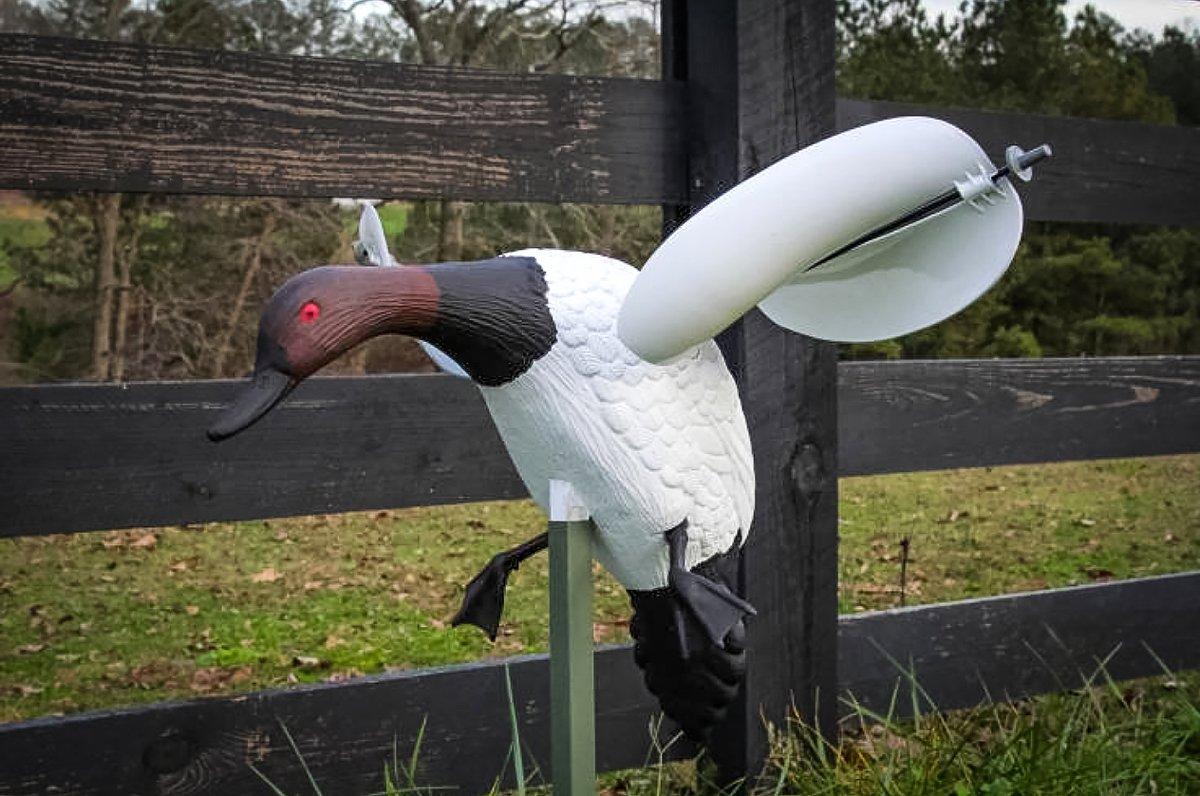Some cheap paint and a few dollars will help you decoy cans, 'bills and redheads
Editor's note: This blog originally appeared Dec. 15, 2015.
I spend most of my time in flooded fields, shallow sloughs or timber chasing puddle ducks. However, I hunt big lakes near the Tennessee River for divers when canvasbacks show up in good numbers or backwater hunting is slow.
I'm not brave enough to hunt from a layout boat because around here, the average angler running a bass boat at 70 mph isn't watching out for some dude floating in the middle of the lake chasing ducks, and dying would severely cut into my time afield. So, I hunt from the shoreline, watch most of the birds fly well out of range, and shoot the occasional ones that kamikaze my spread.
When some buddies from up North called to plan a trip with me to the Delta, I picked their brains about hunting divers. These fellows have hunted big-water divers for decades, and although I have the edge on calling ducks when they visit, their knowledge on decoying and hunting diving ducks supersedes my amateur attempts. We discussed decoy strategies, spread patterns, and tricks to get passing ducks to give my spread some love. Aside from adding a few dozen more decoys to the spread, they mentioned using a couple of spinning-wing decoys. I have mixed feelings about using spinners when hunting puddle ducks. In my experience, wary ducks typically flare off spinners, with some exception in the timber, but I prefer to rely more on location and calling to bring ducks through the trees or into a backwater slough. That said, I have used spinners, and they have worked, so the prospect of using them for decoying divers was appealing.
I decided to get a couple of spinning-wing diver decoys to add to my spread, but the company I found that manufactured specialty canvasback spinners was back-ordered for almost two months, and other big-name companies didn't offer a canvasback spinner. That led me to make my own from what was available.
I started by purchasing two wind-powered spinners for about $25 each. I chose the wind-powered versions because I never hunt divers unless the wind is blowing at least 10 mph, and if I screwed up the paint job, I wouldn't lose a ton of money. The next stop was Walmart, where $5 bought me flat white, black and Tuscan red acrylic paint. I should point out that I'm not an artist. That is, I have less artistic ability than a 3-year-old with a broken crayon. Luckily, the color schemes on canvasback decoys are pretty straightforward. And if figured if I can do it, anyone can.
The Tuscan red was a little too bright, so I added some black to achieve the dirty red on a canvasback's head. The bill, lower neck, shoulders and tail are black, so that was easy enough, and the all-white body was a breeze. It simply involved painting over the existing color of a mallard decoy with flat white, which isn't that difficult. I even got fancy and dry-brushed in some flat gray paint I had to add a bit of detail to the feathers. The head didn't look quite dark enough after the paint dried, so I dry-brushed it with flat black, adding a bit of contrast and darkening it up just enough to satisfy my inner art critic. Heck, I even painted the feet black for good measure. Ultimately, I had two pretty good-looking canvasback spinners and the satisfaction of painting my own decoys, even if they were plastic and came from China.
Now, my disclaimer is that several hundred ducks flew by without giving me a second glance, but a duck will be a duck, and that's the way it is.
You're probably wondering if they worked. Well, they did. They weren't exactly the duck magnets for which I'd hoped, but the flashing of the spiraling wings seemed to get several cans to commit to the spread — or at least that's what I believe. I did not notice any divers flaring off the spinners and actually had a few ringnecks and a half-dozen redheads try to land on the spinner or next to it. Now, my disclaimer is that several hundred ducks flew by without giving me a second glance, but a duck will be a duck, and that's the way it is.
If you'd like to paint your own diver decoys, you'll need a couple of detail art brushes, a medium foam brush for the body (it speeds up the process of covering the entire body in white), and the correct colors. Stay away from semi-gloss and anything that will reflect light or give the paint a shiny appearance. The dry-brush technique is simple. Dip the brush in paint, wipe the brush nearly dry with a paper towel, and gently brush against the feather grain. This technique gives feathers depth and detail for added realism. The entire project took a couple of hours because you need two coats of paint to make sure everything looks even. I took the extra measure of spraying the finished decoy with flat hard acrylic to keep the paint from chipping easily.
There you have it — a quick, easy do-it-yourself spinning-wing decoy for divers. If you want to add realism to an existing spread or maybe get bored on a rainy day, give it a try. Although they might not work every time, these spinners are another tool to add to your bag of tricks, which might make the difference between pulling the trigger or just being a bird watcher.
Click here for more Realtree waterfowl hunting content. And check us out on Facebook.









